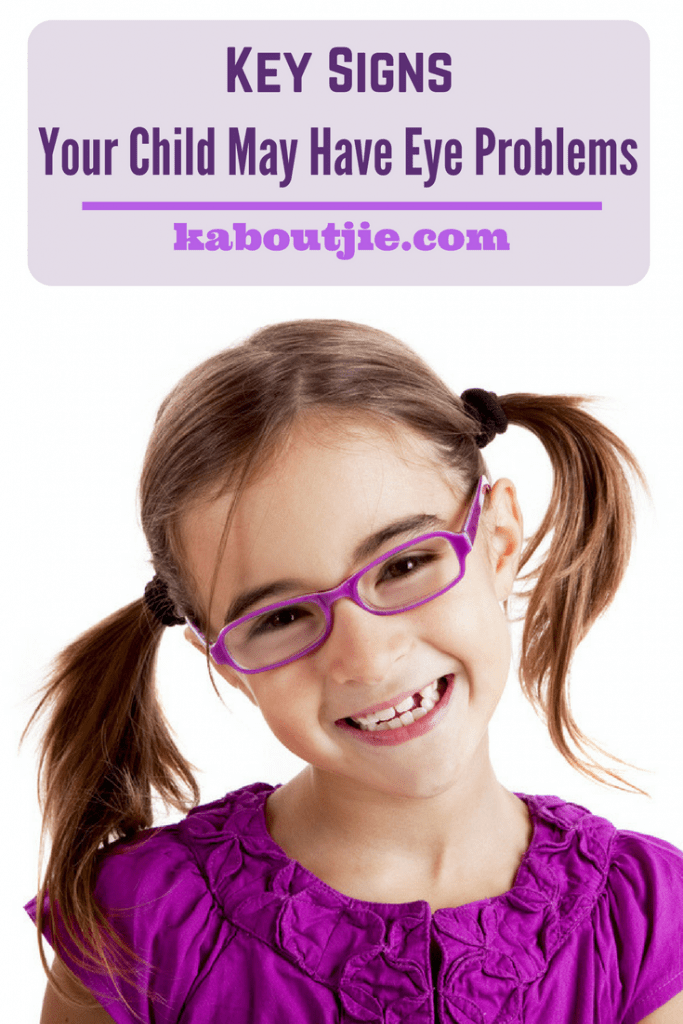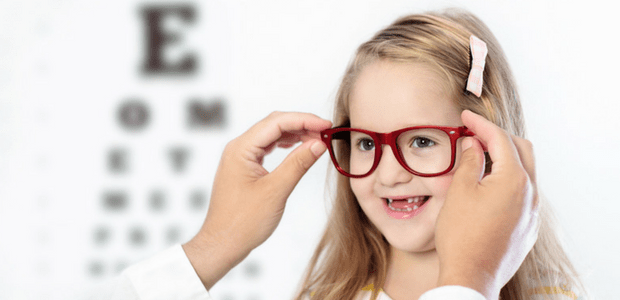Our eyes are windows to the wonderful world around us. It allows us to see the world as it is, and it shows us the world in its full splendor. We see a lot of great and amazing things throughout our lives, but it’s also important to remember that our eyes work with us for as long as we take care of them. Sadly, children, perhaps the most creative beings out there, don’t always have the awareness needed to take care of their eyes. As parents, guardians, and people who are concerned for their welfare, it’s up to us to make sure their eyes stay as vibrant as ever. Here are some signs that our child might have an eye problem, or might develop an eye problem.

-
Is Your Child Prone To Lean Close To Electronics?
It’s not wrong to lean closer to objects we can’t exactly see properly, but if we see our children lean close to electronics all the time, then we might be witnessing the first signs of an eye problem in its infancy. Remember, electronics emit light radiation and bright light, and constant exposure to bright light can permanently damage our child’s eyes, especially now that they are still in development.
- If your child has a gadget like a smartphone, a tablet, or a laptop, and you find them leaning in close too much to watch a video or play games that are already on full screen, then your child might have a developing eye problem.
- If your child is exhibiting the above but is also wearing glasses, then it might be a sign of a worse eye problem.
- Try to observe just how close your child is compared to the electronic device you’re seeing, and gauge if the normal eye could see the things they’re leaning towards. If, say, a text is something visible from your end at the same distance, and it seems blurred for your child, then you may be facing a problem.
-
Is Your Child Experiencing Difficulties In Things Related To Vision?
The signs aren’t just related to electronics, however, as your child might exhibit difficulties in tasks related to vision as well. Try to observe their behavior towards tasks involving following objects, or using their eyes to do things.
- If your child likes to read books closer to their faces, then this might be one of the little signs that they may have an eye problem.
- If your child tells you they can’t distinguish colors properly, then they may have a problem.
- If they experience trouble seeing the blackboard, looking at small objects from a distance, or potential hazards such as corners and stairs, then this might be a vision problem.
- You have to pay attention if your child is clumsy when doing things that shouldn’t let them be prone to injury, such as walking to somewhere while holding something.
- If your child avoids tasks that involve near vision activities like writing or coloring, and if they avoid distance vision activities like catch, seeing planes and birds, then these may be signs of a vision problem.

-
Does Your Child Have Strange Eye Habits?
We all have our quirks, and children have theirs too. However, if they have “quirks” involving their eyes that seem out of place, then your child might be experiencing the signs of a vision problem waiting to happen.
- If your child squints or blinks often than usual, especially when doing tasks that need their eyes, then they might have an eyesight problem.
- If your child tilts to see better, or closes one eye to see an object better, then they may have an eye problem.
- If your child is prone to rub their eyes even if they aren’t itchy, then they might have an eye problem as well.
-
Do Your Child’s Eyes Look Strange?
Perhaps the most obvious signs of a potential eye problem might be staring us right in the face and we aren’t seeing it. This is especially when we’re talking about our children. Try to look for these signs in their eyes that might tell if they have a vision problem waiting to happen.
- If there are any changes to their eyes that don’t seem normal, then it might be best to get them checked. For instance, if they looked cross eyed, or if the eyes don’t seem to look like they work at the same time, or if there are droopy eyelids and bulgy eyes.
- If your child’s eyes appear to be extra sensitive to light, then you might have a child with an eye problem.
- If there are recurring headaches, or if your child’s eyes show sensitive to light with pain, or a redness that doesn’t seem to go away, then your child might have a vision problem.

What To Do Next?
If you see these signs in your child, it’s important not to panic and assess the situation more closely. Which of these signs appear and how often do they manifest? Start taking notes, especially when it comes to describing the frequency of these signs, and what sort of signs appear. If possible, try to take pictures while they’re “on the act” for your personal reference. These kind of data are important especially when presenting your case to an eye doctor, which can also get a better assessment of your child’s case when they see the things they do when they’re at home.
- Remember, try not to panic, especially when these signs manifest. It’s always better to try to get a cool and calm head by planning what to do next and finding the best remedies with your doctor.
- These signs don’t automatically mean your child is going blind. They may have a condition that affects their eyes.
- If you want to get an initial assessment before going to the doctor, then try to check if you have relatives that may have an eye problem that is known to be genetic. Knowing this, and sharing this to the doctor, may help them give an accurate assessment on your child’s case.
Conclusion
Remember, just because we have sophisticated technology available that could help treat eye problems doesn’t mean we can simply slack off when it comes to help, especially if it’s our child we’re talking about. If you see some of the signs mentioned above, then it might be time to get your child’s eyes checked so you have an idea if they may develop a condition over time. Prevention is always better than cure, but if the signs of a lasting condition are there, then an early treatment is better than finding it out too late. We hope you like this LensWorld contact lenses article.
About The Author
Randal Johnson is a professional in the eye care industry who’s dedicated to helping people see better. He currently writes for Lens World and works on providing useful information for those who may have trouble with their eyes or who may be considering contact lenses. In his spare time, he enjoys spending time with family.
 Kaboutjie SA Mommy Blogs by Lynne Huysamen
Kaboutjie SA Mommy Blogs by Lynne Huysamen





Is there perhaps similar articles on hearing? My little one recently had a hearing screening at school. The report on the test was very negative and indicated that we need to immediately take him to a specialist. When phoning the specialist they informed that a great number of things like a stuffy nose, middle ear infection or a cold could be the culprit. If its possible I would truly appreciate a similar article on hearing and the signs of loss of hearing.
Hi I noticed my son’s school work spelling and even writing something :'(from a book or copying down what I have written with many errors his grades dropped a visit to the school first thing they ask if There’s problems at home ruling that out next step take him for a eye test. Spec savers for kids under 12 wonderful they soon discovered he did have a problem with his eyes. It seems a common problem he has an oval shaped pupil and his sinuses also contributed. After less than a week he received his glasses and we saw a remarkable improvement he doesn’t wear it all the time as his eye sight isn’t that bad we managed to sort it out fast. He has drops as well. After a year of wearing glasses it seems his eye sight didn’t deteriorate but was stable and he looks kind cute in it